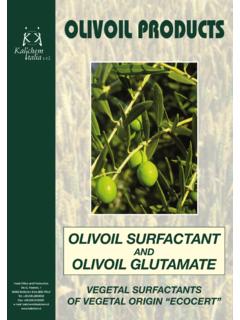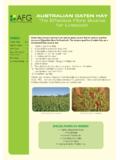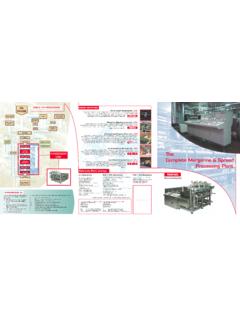Transcription of Health & Environment - WHO
1 Health & EnvironmentTools for Effective Decision-MakingThe WHO-UNEP Health and Environment Linkages Initiative (HELI) Review of Initial FindingsWorld HealthOrganizationHealth & EnvironmentTools for Effective Decision-MakingThe WHO-UNEP Health and Environment Linkages Initiative (HELI) Review of Initial FindingsCover image: La grande famille by Ren Magritte, 1963 Phototh que R. MagritteADAGP, Paris 2005 / and Publication by UNEP/GRID Arendal, March 2005 Printed in NorwayWHO Library Cataloguing-in-Publication DataWHO-UNEP Health and Environment Linkages and Environment : tools for effective decision-making : review of initial findings / the WHO-UNEP Health and Environment Linkages Initiative (HELI) Health policy Health programs making policy countries : Health and Environment ; tools for effective decision-making ISBN 92 4 159297 4 (NLM classification: WA 30) World Health Organization and United Nations Environment Programme, 2004 All rights reserved.
2 Publications of the World Health Organization can be obtained from WHO Press, World Health Organization, 20 Avenue Appia, 1211 Geneva 27, Switzerland (tel: +41 22 791 2476; fax: +41 22 791 4857; email: Requests for permission to reproduce or translate WHO publications whether for sale or for noncom-mercial distribution should be addressed to WHO Press, at the above address (fax: +41 22 791 4806; email: The designations employed and the presentation of the material in this publication do not imply the expression of any opinion whatsoever on the part of the World Health Organiza-tion concerning the legal status of any country, territory, city or area or of its authorities, or concerning the delimitation of its frontiers or boundaries. Dotted lines on maps represent approximate border lines for which there may not yet be full mention of specific companies or of certain manufacturers products does not imply that they are endorsed or recommended by the World Health Organization in preference to others of a similar nature that are not mentioned.))
3 Errors and omissions excepted, the names of proprietary products are distinguished by initial capital reasonable precautions have been taken by WHO to verify the information contained in this publication. However, the published material is being distributed without warranty of any kind, either express or implied. The responsibility for the interpretation and use of the material lies with the reader. In no event shall the World Health Organization be liable for damages arising from its use. For enquiries about HELI, please contact: The WHO/UNEP Health and Environment Linkages Initiative SecretariatWorld Health Organization 20 Avenue Appia1211 Geneva 27, Switzerland Email: OF CONTENTS PREFACETHE CHALLENGETHE LINKSPILOT PROJECTSENVIRONMENT AND Health TOOLSINTEGRATIONMOVING AHEADREFERENCES57111317212325 This report used to store milk and report was printed on recycled milk and juice cartons.
4 The entire paper production process incorporates sustainability objectives. Few chemicals are used, water is reused and the use of electricity is kept to a longstanding to emerging hazards, environmental factors are a root cause of a significant burden of death, disease and disability - globally and particularly in develop-ing countries. They range from poor water quality and access, vector-borne disease and air pollution to toxic chemical exposures, climate change and degraded urban environ-ments. The resulting impacts are estimated to cause over 25% of death and disease globally, reaching nearly 35% in regions such as sub-Saharan Africa (1). Much of this burden rests upon the shoulders of the poor and vulnerable. Many of these deaths are avoidable and much of this disease is preventable.
5 However, effective action requires renewed moral commitment to sustainable development and determined political action through international and national partnerships. Together we must translate our global knowledge-base on Environment and Health linkages into practi-cal policy tools and action at the country level, incorporating Environment and Health considerations into social, economic and political decisions. Simple and cost-effective solutions can best be implemented when potential impacts are considered early in the policy process -- rather than after environmental damage has occurred, Health problems have emerged and human lives cut short or damaged. This requires an inclusive approach to the problems. For too long, the vicious cycle of unsus-tainable development, ecosystem degradation, poverty and ill Health has been addressed sectorally, from a crisis management and curative perspective, rather than multisectorally and through preventive strategies.
6 In response to the urgent need for a more coherent and proactive policy agenda, the World Health Organization (WHO) and the United Nations Environment Programme (UNEP) joined forces at the 2002 World Summit on Sustainable Development (WSSD) to launch the Health and Environment Linkages Initiative (HELI). Sponsored by the Govern-ment of Canada and supported by the United States Environment Protection Agency, the overriding mission is the facilitation of better access at country level to existing knowl-edge, tools and methods for making good policy decisions on Environment and Health . UNEP and WHO provide partner countries with direct support to address critical development/policy issues of their choice from a linked Environment and Health perspec-tive; develop a holistic package of recommendations; and take action for implementation.
7 This intersectoral approach can optimize the use of economic tools to quantify the Health and environmental impacts of alternative choices and, where relevant, translate these impacts into the monetary terms upon which decision-makers often base their judge-ments. Using the tools of economic valuation to address Health and environmental problems creates other synergies. It contributes to a greater appreciation of the goods and services provided by natural ecosystems. It can help decision-makers to identify mutually beneficial strategies that simultaneously promote human well-being and environmental protection and development, as well as poverty Jordan, Thailand and Uganda, HELI's initial country partners, decision-makers from Health , Environment and other government sectors are working together to assess water, agricultural and livestock management policies from an integrated Health and environ-mental perspective.
8 At the global level, HELI is developing tools and resources relevant to country-level policy-makers. This includes guidance on the conduct of assessments and on economic analysis of linked impacts. A web portal is being developed to provide an initial point of access for information about priority environmental hazards, related Health issues and best practice policy approaches -- with reference to the wider range of WHO and UNEP resources initiative is a panacea or a "one-fix" solution. However, by linking scientific knowledge to its application in a demand-driven approach and by working directly with country-level policy-makers from a wide range of sectors, UNEP and WHO can catalyse the design of more complementary Environment , social and economic policies. Our country partners share our conviction that it is time to adopt a more proactive approach to Environment and Health decision-making, addressing the root causes of much disease rather than the symptoms alone.
9 Together, we want to demonstrate that such an approach makes good public policy sense, that in the broader and long-term perspective: what is good for the Environment can be good for Health and good for less than a year of implementation behind us, an inclusive process is now well under way and gaining momentum. We are very pleased to share this report on the initial findings and results of HELI's activities and pilot projects, reflecting both the achieve-ments and the challenging work still ahead. A product of the partnership spirit of Johannesburg, HELI is an example of effective cooperation and action at international, regional and country levels. It combines the talents of WHO and UNEP in a targeted approach to policy-makers. We invite others to join us, strengthening Health and Environment linkages in policy-making, as part of our common response to the implementation imperative posed by the World Summit on Sustainable Development and the United Nations Millennium Development WHO/UNEP HELI initiative is funded by Health Canada and Environment Canada.
10 PREFACEF5 World HealthOrganizationHealth and Environment Linkages Initiative - HELI HELI is a global effort by WHO and UNEP to promote and facilitate action in developing countries to reduce environ-mental threats to human Health , in support of sustainable development objectives. HELI supports a more coherent approach to valuing the services that ecosystems provide to human Health as part of decision-making processes. Activities include:Projects at country level bringing together diverse government and civil society sectors to assess and recommend integrated policies on Environment and Health on better use of impact assessment and economic valuation to enhance Environment and Health access to policy-relevant knowledge, resources, and tools, via electronic media and printed materials, in priority areas.
















